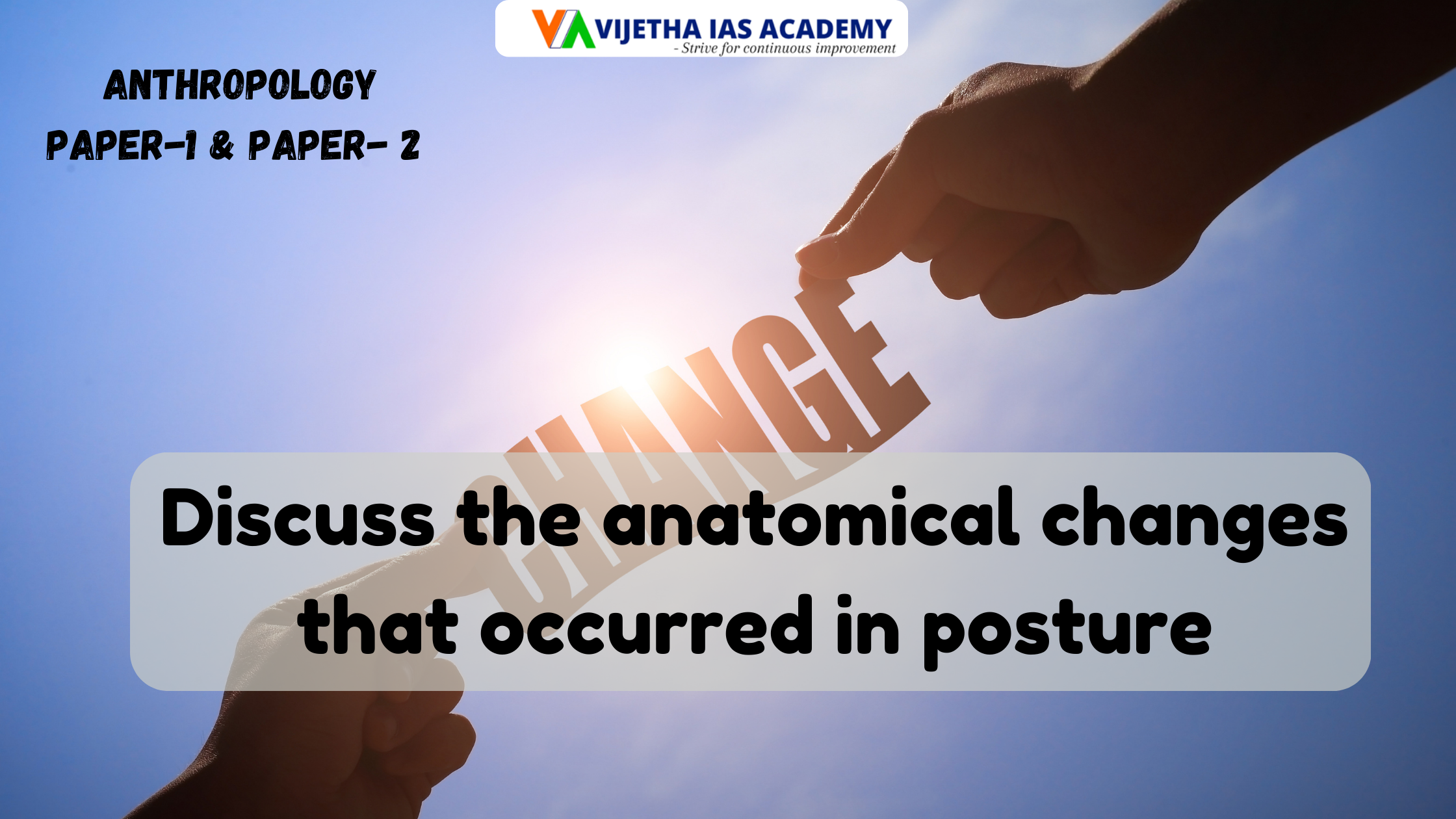The evolutionary significance of bipedalism and erect posture? Explained for UPSC | Vijetha IAS Academy
The evolutionary significance of bipedalism and erect posture? Explained for UPSC | Vijetha IAS Academy
Author : Vijetha IAS
Date : {{formatDate('Sat Aug 31 2024 15:25:53 GMT+0530 (India Standard Time)') }}
Category : Current Affairs, Daily article, Daily News,

Introduction
Bipedalism, the ability to walk upright on two legs, and erect posture are hallmark traits that distinguish humans from other primates. These evolutionary adaptations have profound implications for human evolution, influencing anatomical, ecological, and behavioral aspects. Understanding the evolutionary significance of bipedalism and erect posture provides insights into the adaptive strategies of early hominins and the development of human societies.
Main Body
1. Anatomical Changes and Adaptations:
Bipedalism led to several key anatomical changes in early hominins. The shift to an upright posture necessitated modifications in the skeletal structure, including:
- Pelvis: The pelvis evolved to support the body’s weight more efficiently during bipedal locomotion. The broad, bowl-shaped pelvis in humans contrasts with the elongated pelvis of quadrupedal primates, providing stability and balance.
- Spine: The human spine developed an S-shaped curve that aids in maintaining balance and distributing weight. This curvature helps absorb shock and reduces the risk of spinal injuries during locomotion.
- Legs and Feet: The lengthening of the lower limbs relative to the upper limbs and the alignment of the femur with the knee joint contribute to efficient bipedal walking. The structure of the foot, including the development of a pronounced arch, supports the body’s weight and provides a spring-like function during movement.
2. Ecological and Behavioral Implications:
The transition to bipedalism had significant ecological and behavioral consequences:
- Energy Efficiency: Bipedalism is energetically more efficient than quadrupedalism over long distances. This adaptation allowed early hominins to travel greater distances in search of food and resources, contributing to their survival and adaptation in diverse environments.
- Tool Use and Carrying: Upright posture freed the hands for tool use and carrying objects. This not only facilitated the development of complex tools but also enabled early hominins to transport food and other resources, enhancing their foraging efficiency and social interactions.
- Thermoregulation: Bipedalism exposed less surface area to direct sunlight, which, in combination with an upright posture, helped early hominins regulate body temperature more effectively in hot and open environments. This adaptation is crucial for survival in savannah-like habitats where heat management is essential.
3. Social and Cognitive Development:
Bipedalism and erect posture influenced social behaviors and cognitive development:
- Social Interactions: An upright posture allowed for better visibility and communication, which likely facilitated social interactions and group coordination. This increased the complexity of social structures and relationships within early hominin groups.
- Cognitive Evolution: The development of complex tool use and enhanced social interactions driven by bipedalism likely stimulated cognitive growth. The need for planning and problem-solving in tool use and social coordination may have contributed to the evolution of larger brain sizes and advanced cognitive abilities.
Conclusion
In conclusion, bipedalism and erect posture represent pivotal evolutionary adaptations that have shaped human anatomy, behavior, and social structures. These traits provided early hominins with various advantages, including energy-efficient locomotion, enhanced tool use, and improved thermoregulation. The evolutionary significance of these adaptations extends beyond mere physical changes, influencing the cognitive and social development of humans. Understanding these aspects offers valuable insights into the broader evolutionary narrative of our species.
-1647944223018.png)